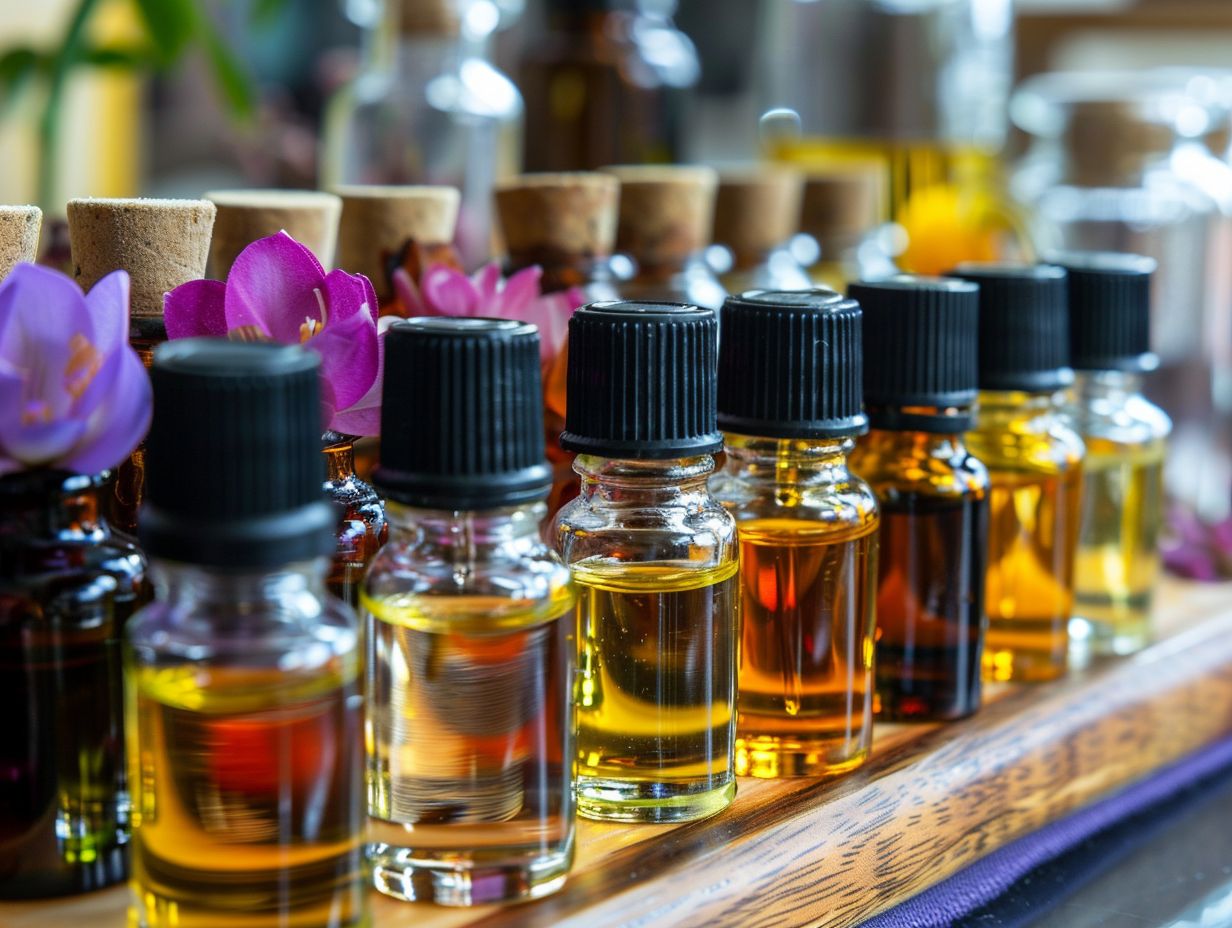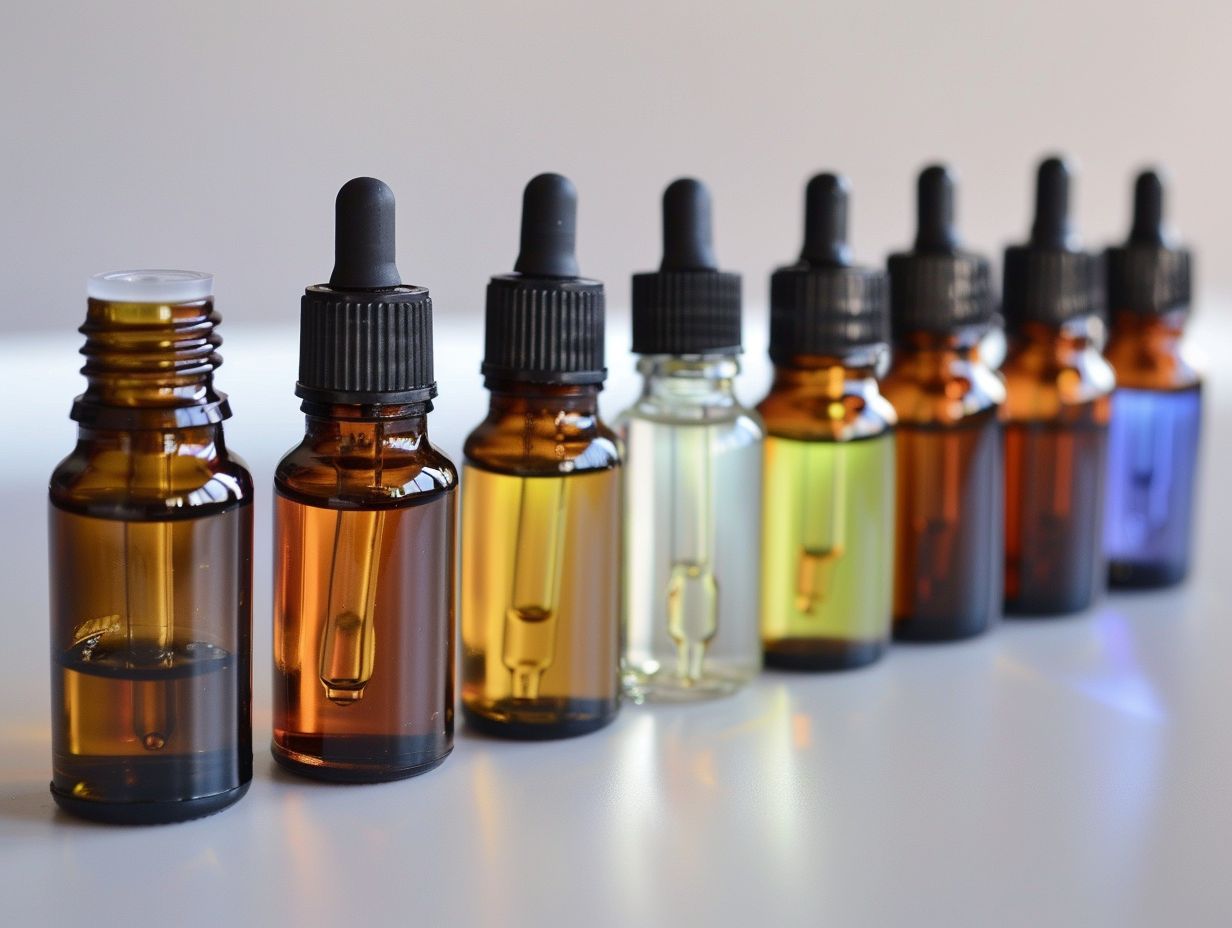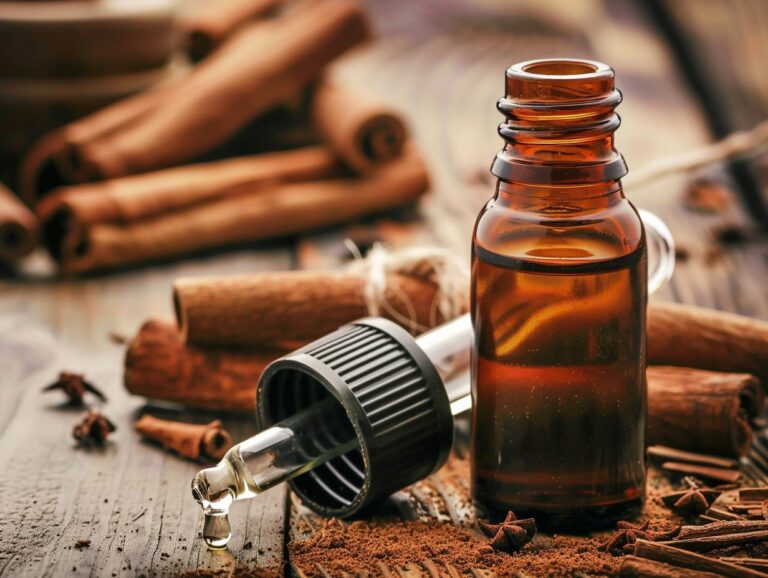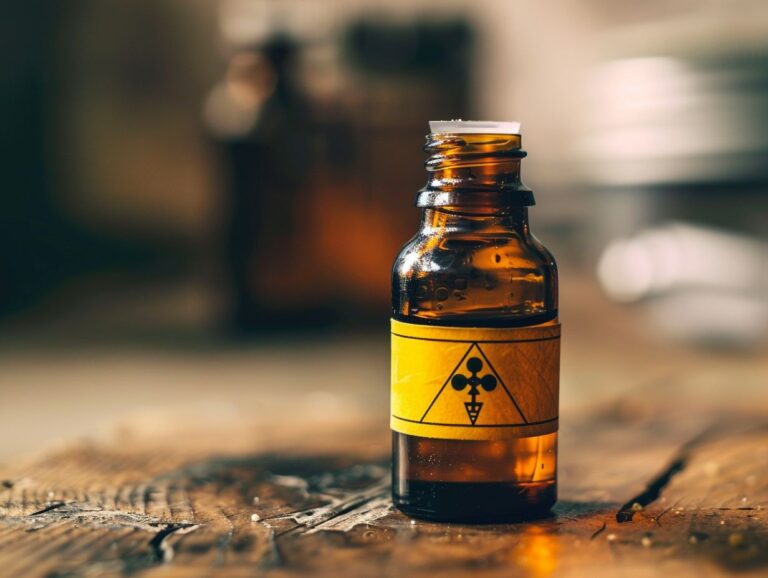What Scents Do Essential Oils Come in
Curious about essential oils and their various scents? There is a wide range of essential oils to explore, from citrus to floral, herbal to spicy.
We will discuss what essential oils are, how they are extracted, the different types available, the benefits of using them, safety precautions to keep in mind, and how to use them effectively through aromatherapy, topical application, inhalation, and ingestion.
Join us as we dive into the world of essential oils and their many uses!
Key Takeaways:
What Are Essential Oils?
Essential oils are highly concentrated plant extracts containing volatile compounds that capture the aroma and flavoring of a plant. These oils are extracted through various methods like steam distillation or cold-pressing, retaining the plant’s beneficial properties.
These volatile compounds are what give essential oils their unique properties, making them popular in aromatherapy and natural medicine due to their potential medicinal benefits. The extraction process involves specific techniques to ensure the purity and potency of the oils. Steam distillation, for example, uses hot steam to extract the oils without damaging their composition, whereas cold-pressing is commonly used for citrus fruits.
Once extracted, essential oils can be used in a variety of ways, such as aromatic diffusion, topical application, or even ingestion in some cases, albeit cautiously. Each method of application can deliver different therapeutic effects, from relaxation to skin rejuvenation, depending on the oil’s composition and properties.
How Are Essential Oils Extracted?
Essential oils are extracted through methods like steam distillation, where the plant material is exposed to steam to release the oils, or cold-pressing, which involves mechanical pressing to obtain the oils without heat.
Steam distillation is a popular method due to its effectiveness in extracting a wide range of oils from different plant materials. The process involves heating the plant material with steam, causing the oil glands to burst open and release the essential oils which are then condensed back into a liquid form.
On the other hand, cold-pressing is commonly used for citrus fruits and other oil-rich fruits. This method involves physically pressing the plant material to extract the oils without the use of heat, preserving the oils’ delicate aromatic compounds.
The choice of extraction method plays a crucial role in determining the quality of the essential oils. Steam-distilled oils are often considered superior in quality due to the controlled temperature during extraction, which helps retain the oil’s purity and potency. Cold-pressed oils, although retaining more of the plant’s natural characteristics, may have a shorter shelf life compared to steam-distilled oils.
What Are the Different Types of Essential Oils?
Essential oils come in various types based on the plant source, such as Citrus Oils extracted from citrus fruits, Floral Oils from flowers, Herbal Oils from herbs, Spicy Oils from spices, and more, each offering distinct scents and properties.
Citrus oils, known for their fresh and uplifting fragrances, are commonly used in aromatherapy to boost mood and energy levels. Floral oils, on the other hand, like lavender and rose, are prized for their calming and relaxation-inducing effects. Herbal oils, such as peppermint and eucalyptus, are popular for their invigorating properties and ability to clear sinuses. Spicy oils, like cinnamon and clove, are often used for their warming and stimulating characteristics.
Each type of essential oil not only brings a unique aroma but also offers a range of therapeutic benefits. Citrus oils are great for revitalizing the senses, while floral oils are soothing and help reduce stress. Herbal oils have antibacterial and anti-inflammatory properties, making them ideal for treating respiratory issues, and spicy oils are often used in blends for their immune-boosting properties.
Citrus Oils
Citrus oils are derived from citrus fruits like Bergamot, Lemon, and Orange, known for their uplifting and refreshing scents. They are commonly used in blends for their bright top notes and are extracted through cold-pressing the fruit peels.
Citrus oils, with their zesty and invigorating aromas, are versatile essences that can uplift any mood and environment. Due to their light and fruity nature, they are perfect for creating refreshing perfumes, room sprays, and cleaning products. In aromatherapy, these oils are valued for their ability to boost energy, improve focus, and reduce stress.
Regarding blending, citrus oils are often paired with floral, spicy, or woody essential oils to create complex and balanced fragrances. Their high volatility makes them excellent top notes that quickly diffuse into the air, leaving a lingering fresh scent.
Floral Oils
Floral oils, such as Lavender, Rose, and Jasmine, offer floral and sweet aromas, commonly used in perfumery and aromatherapy for their calming and soothing properties. Dilution is often recommended for safe topical application.
These essential oils are extracted from various parts of the flower, such as petals, stems, or even the whole bloom, resulting in a potent concentration of the plant’s aromatic compounds. The therapeutic benefits of floral oils extend beyond their pleasant scents, with each type carrying unique properties that can aid in relaxation, stress relief, and mood enhancement.
Proper dilution is crucial when using these oils, as their potency can cause skin irritation if applied directly. Mixing them with carrier oils like jojoba or coconut oil helps ensure safe usage and maximizes the benefits without compromising effectiveness.
Herbal Oils
Herbal oils like Basil, Eucalyptus, and Tea Tree are valued for their herbal and medicinal properties, often used in massage therapy for their therapeutic benefits. These oils offer a natural approach to supporting health and wellness.
Known for their distinct herbal scents, these oils not only provide a relaxing aromatherapy experience but also boast a wide array of health benefits. From promoting relaxation and reducing stress to alleviating muscle tension, herbal oils are versatile in their applications.
In massage therapy, the soothing properties of these oils can enhance the overall experience, aiding in relieving sore muscles and improving circulation. The natural ingredients found in these oils, such as essential fatty acids and antioxidants, contribute to their nourishing effects on the skin.
The uses of herbal oils extend beyond massage therapy; they can be diffused for aromatherapy, added to skincare products for their rejuvenating properties, or even utilized in home remedies for various ailments.
Spicy Oils
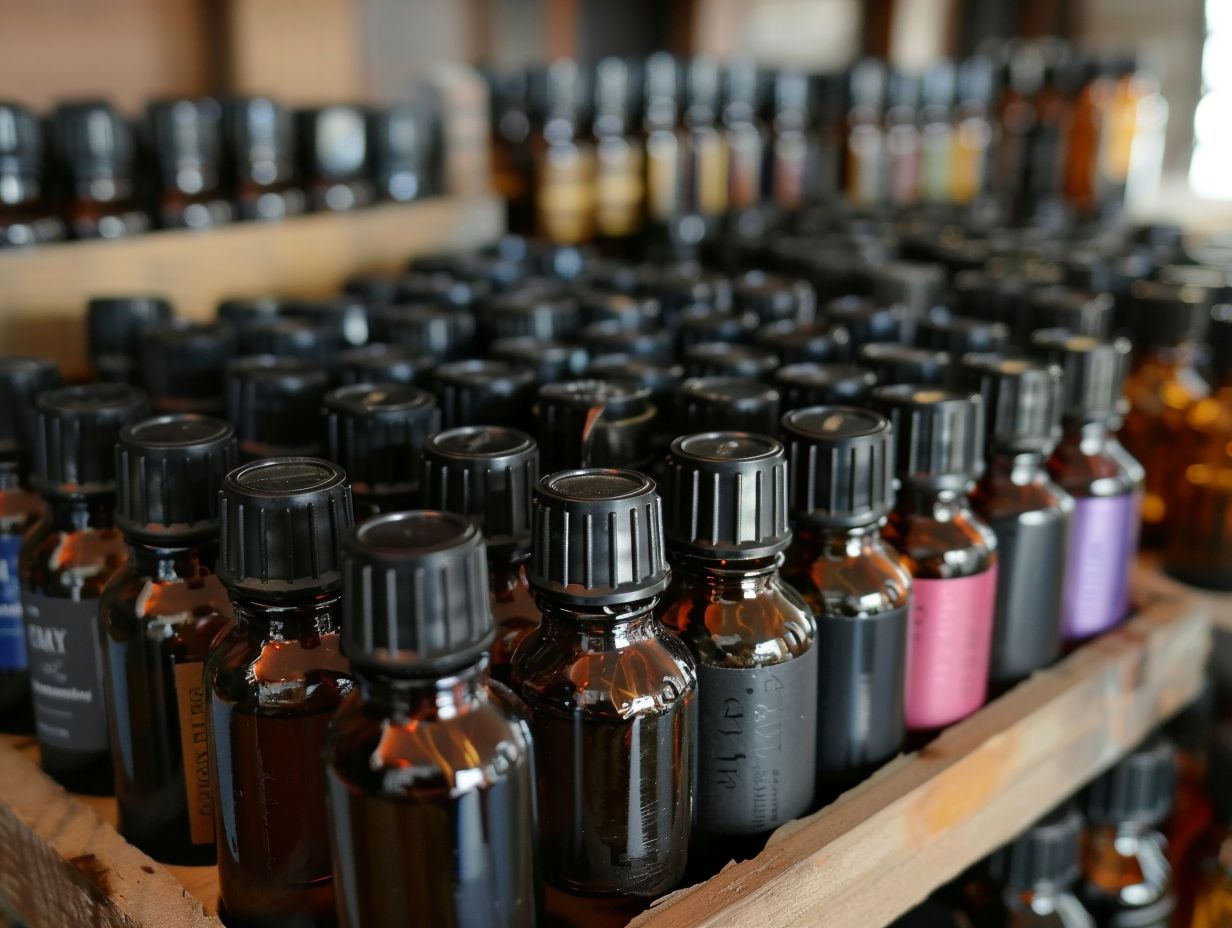
Adding a few drops of Spicy Oils to diffusers or massage oils can unleash a burst of stimulating fragrance, uplifting the atmosphere and promoting relaxation. Their spicy aromas are renowned for their ability to invigorate the senses and create a sense of warmth and comfort. When combined with other essential oils such as citrus or herbal ones, these spicy oils can form captivating blends that cater to diverse preferences.
- The potent properties of these oils make them valuable additions to skincare and haircare formulations, offering natural solutions for addressing various concerns.’
- For example, Clove oil is well-known for its analgesic and antimicrobial qualities, making it a popular choice for relieving toothaches and supporting oral health.’
Woody Oils
Woody oils like Sandalwood, Cedarwood, and Patchouli provide rich, grounding scents often used as base notes in perfumery. These oils find applications in fragrance creation, various uses, and are associated with well-known brands.
These woody oils are prized for their deep, earthy aromas that evoke feelings of warmth and stability. Sandalwood, known for its creamy and exotic fragrance, adds a touch of luxury to perfumes. Cedarwood offers a fresh, woody scent that is both calming and invigorating, making it a popular choice for aromatherapy. Patchouli, with its musky and spicy notes, is often used in oriental fragrances for its sensual and mysterious allure.
Aside from perfumery, these oils have a wide range of applications. They are commonly utilized in skincare products for their antiseptic and astringent properties. They are used in aromatherapy to promote relaxation and reduce stress.
Many renowned perfume brands incorporate these woody oils into their signature scents. Their enduring popularity in the fragrance industry stems from their ability to add depth and longevity to perfumes, creating a harmonious blend of top, middle, and base notes.
Earthy Oils
Earthy oils like Angelica and Agarwood offer grounding and earthy scents, extracted through specific methods to retain their unique properties. These oils find uses in various applications for their distinct aromatic profile.
Angelica oil, derived from the Angelica archangelica plant, is known for its herbaceous and woody scent that promotes a sense of balance and stability. On the other hand, Agarwood oil, extracted from the resinous heartwood of Aquilaria trees, exudes a rich, balsamic fragrance that is both grounding and spiritually uplifting.
These earthy oils are often obtained through steam distillation, enfleurage, or cold pressing methods to preserve their therapeutic qualities. Rich in compounds like sesquiterpenes and phenols, they possess anti-inflammatory, antimicrobial, and calming properties.
The use of Angelica and Agarwood oils extends beyond aromatherapy to skincare, massage therapy, and even in spiritual practices for meditation and grounding rituals.
Minty Oils
Minty oils like Peppermint and Spearmint offer refreshing and invigorating scents, known for their cooling properties and benefits for health. These oils are commonly used in diffusers for their aromatic effects.
Peppermint and Spearmint oils not only provide a fresh and minty aroma but also boast a range of therapeutic properties. Peppermint oil is widely recognized for its ability to alleviate headaches, improve focus, and soothe gastrointestinal discomfort. On the other hand, Spearmint oil is often used for its calming and digestive benefits.
These oils can be utilized in various ways to promote well-being, such as through topical application for muscle relief or inhaled through diffusers for respiratory support. Their natural cooling sensation can help uplift mood and enhance mental clarity.
Camphoraceous Oils
Camphoraceous oils like Eucalyptus and Rosemary offer medicinal and camphor-like scents, valued for their therapeutic properties in various applications. These oils are known for their potential health benefits.
These oils are commonly used in aromatherapy and traditional medicine due to their invigorating and refreshing fragrances. Apart from their distinctive aroma, camphoraceous oils are praised for their anti-inflammatory and decongestant properties, making them effective in treating respiratory conditions like coughs and congestion. The cooling sensation they provide can also help alleviate muscle aches and pains, making them popular choices for massage oils. These oils are known for their antifungal and antibacterial properties, which can aid in boosting the immune system and fighting off infections.
Resinous Oils
Resinous oils like Frankincense and Myrrh offer rich and resinous scents derived from tree resins, known for their beneficial properties and diverse uses.
These oils have been used for centuries in various cultures for their therapeutic and healing properties. Known for their grounding and calming effects, resinous oils are often used in aromatherapy to promote relaxation, reduce stress, and enhance meditation practices. Their antibacterial and anti-inflammatory properties make them effective in skincare products, aiding in wound healing and combating acne. The fragrant scent of these oils is commonly used in perfumery to create rich and exotic blends.
Medicinal Oils
Medicinal oils like Tea Tree and Clary Sage offer potent medicinal properties beneficial for health and well-being. These oils are known for their therapeutic benefits and natural ingredients used in various remedies.
One of the key characteristics of such oils is their versatility in addressing a range of health issues, from relieving skin conditions such as acne and eczema to promoting relaxation and reducing stress levels. Their rich composition of active compounds, including monoterpenes and sesquiterpenes, gives them powerful antibacterial, anti-inflammatory, and antifungal properties. These oils are commonly used in aromatherapy, massage therapy, and skincare products for their rejuvenating effects. Incorporating these oils into your daily routine can significantly enhance your overall well-being.
What Are the Benefits of Using Essential Oils?
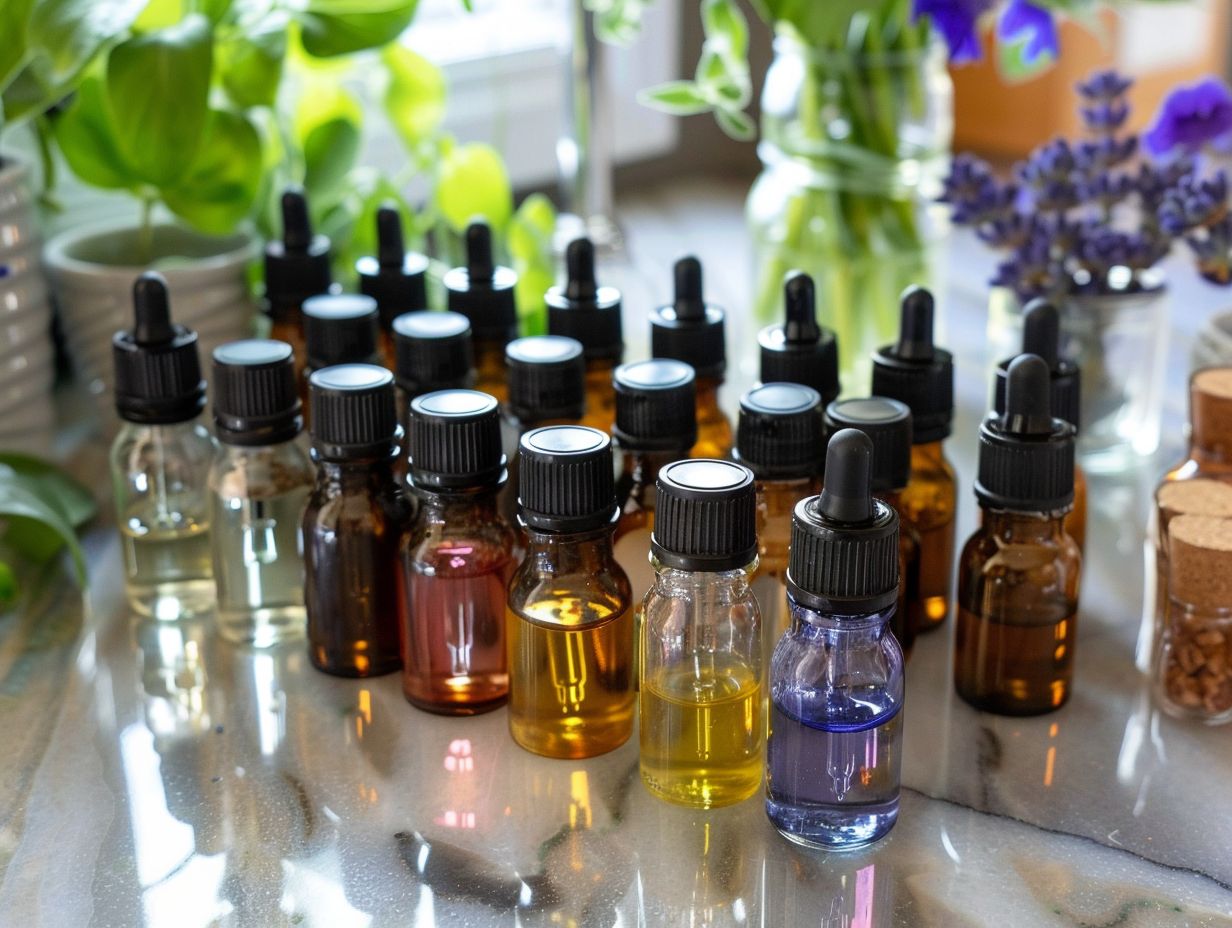
Essential oils have been used for centuries in various cultures for their healing properties in aromatherapy, massage, and skincare. The diverse range of oils such as lavender, peppermint, and tea tree oil offer unique benefits.
- Health benefits include aiding digestion, reducing headaches, and boosting immunity.
- Their therapeutic properties can help alleviate stress, anxiety, and insomnia.
- When used in diffusers or baths, essential oils can create a calming environment, uplifting spirits and balancing emotions.
These natural remedies provide a holistic approach to well-being, nurturing both the body and mind.
What Are the Safety Precautions for Using Essential Oils?
While essential oils offer numerous benefits, it is essential to observe safety precautions such as proper dilution, skin patch testing, and following manufacturer guidelines. A medical disclaimer is often recommended for individuals with specific health conditions.
Proper dilution of essential oils is crucial as their concentrated nature may cause skin irritation or allergic reactions if used undiluted.
Skin patch testing before widespread application helps identify any adverse reactions that an individual may have to a particular oil.
It is also important to follow the guidelines provided by the manufacturer regarding usage, application methods, and recommended dilution ratios.
How Can Essential Oils Be Used?
Essential oils can be used in various ways, including aromatherapy for inhalation, topical application in massage therapy, diffusing through a diffuser for ambient scent, or ingestion in specific cases under guidance.
Regarding aromatherapy, essential oils are often added to a diffuser or humidifier to disperse their scent throughout a room, creating a calming or invigorating atmosphere depending on the oil used. In massage therapy, essential oils are diluted in carrier oils and applied to the skin through gentle massaging, providing both physiological and psychological benefits. Diffusing essential oils through a diffuser not only freshens the air but can also help with relaxation, stress relief, or even improve focus and concentration.
Aromatherapy
Aromatherapy involves using essential oils to create pleasing scents that can evoke specific moods or promote relaxation. Blending oils and diffusing them through a diffuser are common practices in aromatherapy.
Regarding creating scents for aromatherapy, understanding the properties of different essential oils is crucial. Some oils, like lavender, are known for their calming effects, perfect for inducing relaxation. On the other hand, citrus oils such as lemon or orange can uplift and energize the mood.
Mastering the art of blending these oils is where the magic happens. By combining various essential oils in precise quantities, one can create unique blends tailored to their desired effects. This customization offers a personalized touch to the aromatherapy experience.
Topical Application
Topical application of essential oils involves directly applying diluted oils to the skin for health benefits, massage therapy, or addressing specific concerns. Dilution is crucial to prevent skin irritation and ensure safe usage.
When applied topically, essential oils can support overall well-being by promoting relaxation, enhancing mood, soothing muscles, and improving skin health. Essential oils are commonly used in aromatherapy massages to reduce stress, relieve tension, and rejuvenate the body. They can be diluted and applied to the skin to address acne, inflammation, scars, and other skin conditions, offering a natural alternative to chemical-laden skincare products. By incorporating essential oils into your skincare routine, you can achieve radiant and healthy-looking skin while harnessing the therapeutic properties of these potent botanical extracts.
Inhalation
Inhalation of essential oils involves breathing in the aromatic compounds for various health benefits like respiratory support, mood enhancement, or stress relief. The aroma of oils plays a key role in their therapeutic effects.
The practice of inhaling essential oils has been used for centuries in traditional medicine and aromatherapy due to its numerous benefits. When inhaled, the molecules from the oils interact with the olfactory system, sending signals to the brain that can positively affect emotions and overall well-being. Different oils have unique properties that can help with specific issues; for example, eucalyptus oil is often used for respiratory issues, lavender for relaxation, and peppermint for energy.
Ingestion
Ingestion of essential oils involves consuming oils internally for specific therapeutic purposes or health benefits under professional guidance. The properties of oils play a crucial role in their effectiveness when ingested.
When essential oils are ingested, they are absorbed into the bloodstream through the digestive system, allowing for their therapeutic properties to be distributed throughout the body. Therapeutic uses of ingesting essential oils include supporting digestive health, boosting immunity, and promoting overall wellness. These oils are known for their antimicrobial, anti-inflammatory, and antioxidant properties, making them valuable for various health concerns.
It is essential to note that not all essential oils are safe for ingestion, and professional guidance is paramount to ensure their safe and effective usage. Consulting with a qualified practitioner or aromatherapist can help determine the appropriate oils, dosage, and duration to receive the intended benefits without any adverse effects.
Frequently Asked Questions
What scents do essential oils come in?
Essential oils come in a wide range of scents including floral, citrus, herbal, woodsy, and earthy scents. Some popular scents include lavender, peppermint, lemon, eucalyptus, and tea tree.
Can essential oils come in unique or unusual scents?
Yes, essential oils can come in unique or unusual scents such as patchouli, frankincense, and ylang-ylang. Some essential oil companies also offer blends of scents to create a unique aroma.
Are there any essential oils that do not have a scent?
Essential oils are highly concentrated plant extracts, so they typically have a strong scent. However, some essential oils such as fractionated coconut oil and jojoba oil are odorless and often used as carrier oils for diluting stronger scented oils.
Can essential oils come in different strengths?
Yes, essential oils can come in different strengths. Some oils may be more potent and require dilution, while others may be gentle enough to use directly on the skin. It’s important to always read the label and follow recommended usage guidelines.
How do I know which scent of essential oil to choose?
Choosing a scent of essential oil is a personal preference. You can select a scent based on its therapeutic benefits or simply choose one that appeals to your senses. Some people also enjoy rotating between different scents to keep things interesting.
Are there any essential oils that are not safe for certain individuals?
Yes, some essential oils may not be safe for pregnant or breastfeeding women, children, or individuals with certain health conditions. It’s important to consult with a healthcare professional before using essential oils, especially if you fall into one of these categories.

